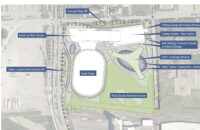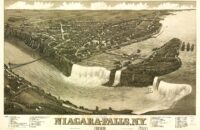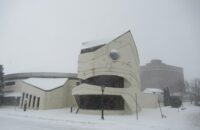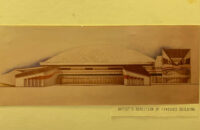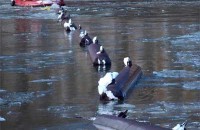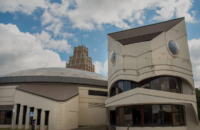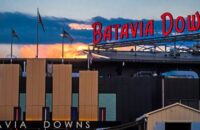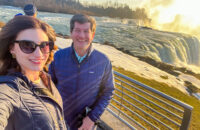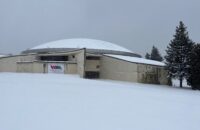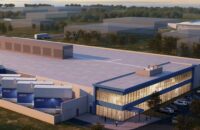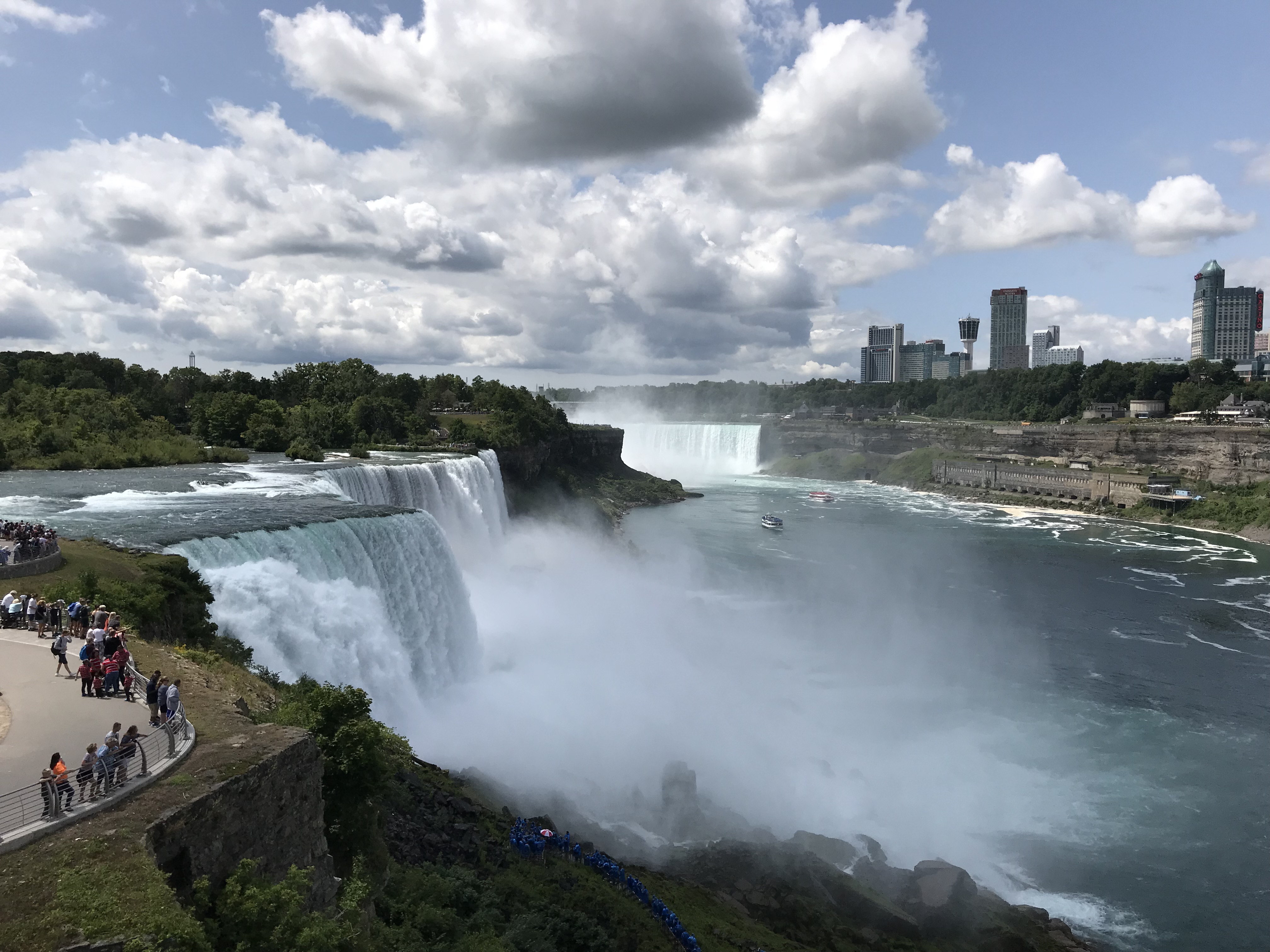By Frank Parlato
Niagara Falls – A section of Portage Road – between Ferry and Niagara – is scheduled for road work this summer and is expected to start any day.
The Portage Road work – which is listed as part of Mayor Paul Dyster’s “in-house street paving & other roadway re-construction costs” in his proposed 2016 capital spending plan is budgeted for $650,000.
It may cost more than that depending on the type of work the city winds up doing on the road and what they unearth.
According to the US Department of Energy’s landmark 1979 EG&G Aerial Radiological Survey and subsequent Oak Ridge Laboratories Ground Level Survey, what is likely buried under Portage Road is a fairly large amount of radioactive material.
In fact, Portage is the most radioactive road per-mile in the city, based on the number of “hot spots” that registered unnatural levels of radioactivity on this road when the federal government conducted is surveys.
The surveys were initiated by concerns stemming from the Love Canal environmental disaster and were meant as an inquiry into the past history of the industrial activities of Niagara.
The 1979 surveys revealed about 100 hot spots in the city. Thirteen alone are on Portage Road.
Buried under Portage Road is what is likely a portion of the derivative radioactive waste product from Niagara’s pioneer role at the beginning of the atomic age, circa 1942, and onward.
At that time the city chemical and metallurgical companies were tasked by the US Government to develop and create radioactive materials necessary for the world’s first reactors and atomic weapons.
The radioactive materials handled by these local industrial complexes ranged from uranium to plutonium and nearly every known isotope of the time. In those early atomic energy days safeguards were not strictly enforced, or were ignored altogether.
The processing and refining of radioactive chemicals and metals produced large quantities of wastes as Niagara Falls became the free world’s largest production center for radioactive uranium metal-from-ore.
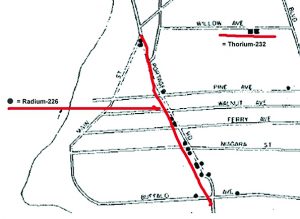
A copy of one of the maps from the US Dept of Energy’s 1979 survey. The map shows that Portage Road has 13 hot spots of concentrated radioactivity that was detected from aerial surveillance.
That also made Niagara Falls the free world’s largest producer of nuclear wastes.
Because the quantities of usable radioactive isotopes being refined from the ore were in trace quantities, the refining process necessitated leaving significant amounts of the remaining isotopes in the massive tonnages of waste associated with this production.
These wastes – which were originally called by those tasked with quietly disposing of it as “slag” – contain significant radioactive materials from a range of isotopes.
Incredibly, it was considered practical to dispose of this waste under various roads, parking lots and driveways in Niagara Falls and surrounding areas.
At the time, people were led to believe that once buried under pavement the radioactivity in the so-called slag would not penetrate the surface, or be less of a hazard.
Today’s science proves this to be a fallacy.
This same method of disposal was unfortunately utilized in other locations around the nation were nuclear wastes were disposed of, often to the knowing devastation of those communities.
In Niagara Falls it is largely unknown, unheeded and ignored. Still, scores of roads in Niagara Falls have radioactive material buried underneath them decades ago.
This came to light a few years ago when Lewiston Road was reconstructed and nuclear “slag” buried there and its partial removal increased the costs of the work by millions of dollars.
Perhaps more significant than cost is the human toll. Scientists have learned that radioactive materials buried under roadways are not completely insulated or made “safe” by pavement over them. This was amply illustrated in the 1979 US Dept. of Energy radiation surveys where unnatural amounts and
levels of radioactivity could be detected from the sky on Portage Road and elsewhere in this city.
Although the surveys are 36 years old, absent removal if the slag, the surveys are not outdated.
Slag buried under the roads by and large remain intact and are often part of the road beds.
There is no known record of the slag being removed.
The radioactive materials are still as potent today as they were when they were buried under Portage and other roads in this city. The isotopes found in the radioactive wastes in Niagara Falls have half-lives ranging from 1600 years to 4.5 billion years, depending on the particular isotope.
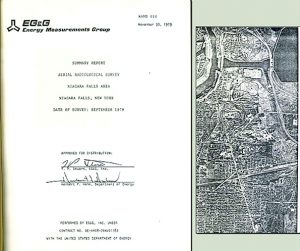
The US Dept of Energy conducted surveys in 1979 to determine the amount of radioactive sites there were in Niagara Falls. They found more than 100.
As anyone who has recently driven it knows, Portage Road is uneven and coarse and badly deteriorated. Signs are posted on the road warning motorist that they will encounter “rough road” ahead.
Perhaps the road will be much rougher than anticipated.
The Niagara Falls Reporter urges the City of Niagara Falls to conduct an immediate, transparent and public analysis of Portage Road prior to construction.
A disturbance of dangerous radioactive materials buried beneath the road for perhaps now more than 65 years could create a health hazard.
The proper protocol would be to do boreholes and have the materials tested in a qualified laboratory (split-sampled with public oversight) to discover their origin and what, if any radioisotope or isotopes are present.
Then, if it is discovered to be radioactive, which previous surveys indicate, the creation of an enforceable and replicable plan to safely dispose of these materials – beyond the boundaries of Niagara Falls to a licensed out-of-state landfill, needs to be implemented.
New York State does not license the waste that is buried under our roads even in remote licensed landfills.
As a takeaway please consider: What is buried under Portage Road is, according to the US Dept. of Energy surveys, part of the citywide problem of under-road burials of some of the oldest, most widespread, and unaddressed nuclear waste in the country.
Failure to test the material before commencing construction, if it is radioactive, could result in the winds and rain scattering nuclear waste, spreading it into people’s homes, their gardens, their children’s hair and ground water. All of which constitutes a danger of inhalation or ingestion.
Radioactive contamination is invisible to the eye and consequently many people ignore it. No one feels the health hazards immediately.
If there is nuclear waste there and it spreads out from under Portage Road through roadwork construction, its manifestation into diseases such as suppression of the immune system and cancerous tumors, may takes years or decades to appear.
Former EPA official, Dr. Jeanette Sherman, M.D. specializes in internal medicine and toxicology, with an emphasis on chemicals and nuclear radiation that cause illness, including cancer. Regarding Niagara Falls, she called it a wide-scale nuclear dump site from the mid-20th century.
Dr. Sherman said, “The situation in Niagara Falls and Niagara County is already manifest through statistical (high) morbidity and mortality rates.”
If that is true, let’s not add to it now.









